Tips For Driving In Australia

There’s no doubt Australia makes it to the top of the dream destination list for a lot of travelers. Australia is the home to vibrant cities, paradise beaches, national parks, breathtaking landscapes, and delicious gastronomy. Your holiday in the Land Down Under will definitely turn out to be the adventure of a lifetime!
If you’re figuring out the logistics, you’re properly wondering about the best way to get around Australia. Well, the answer is simple: there’s no better way to go around Australia than by car! The distances are long and many places you will want to visit are remote. So, you’ll really appreciate the independence and flexibility that driving has to offer.
Moreover, being able to admire the spectacular Aussie views while on the road makes for a priceless experience itself. So now that you’ve found the ideal mode of transport to travel around Australia, we’ve gathered some useful and important driving tips and information for you!
Driving Requirements
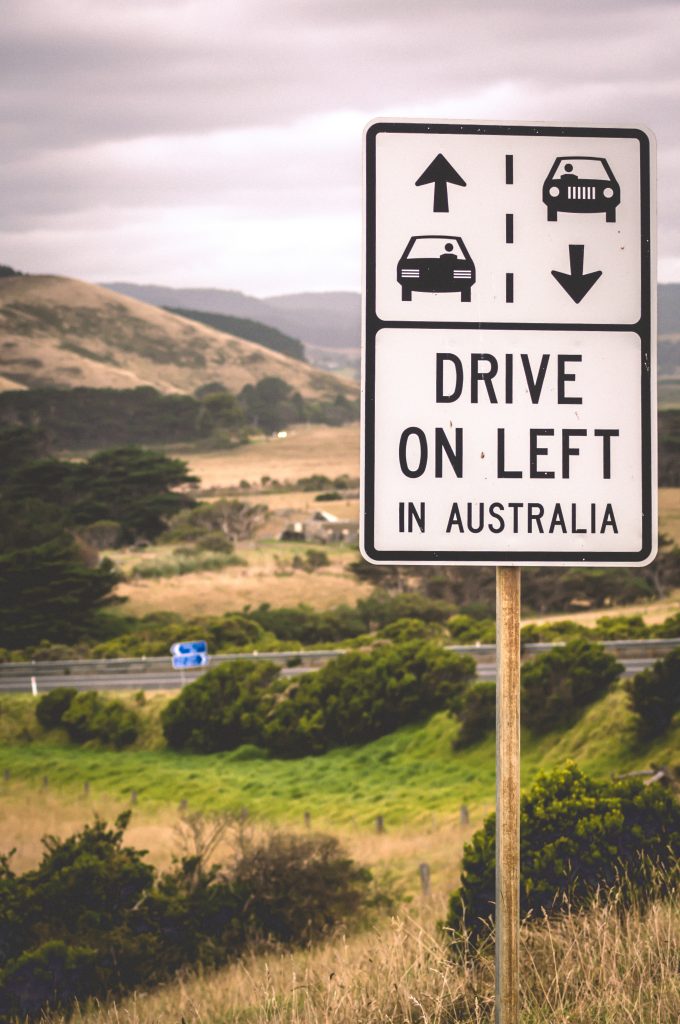
Photo by Thandy Yung on Unsplash
We should probably start by mentioning that Australians drive on the left side of the road. Therefore, the car’s steering wheel is on the right. Before you set off, make sure you have a valid driving license. If it was issued in English, you’re fine to go. Otherwise, you’ll either need an international driving permit in addition or a certified translation of your national driving license.
Driving In Australia For Tourists
Keep in mind that laws and regulations may vary between states and territories. In most of the country you will be able to drive indefinitely if you have:
your valid English-language driving license;
an international driving permit;
your national driving license with its translation into English.
However, in Northern Territory, there is a limit for the overseas drivers. for ones with the non-Australian driving permit, you can use it for three months. If you would like to stay and drive there longer, you have to apply for a locally issued driving license.
Driving In Australia With US License
Holders of the valid US driving license can drive in Australia without having to present any additional permits.
Speed Limits
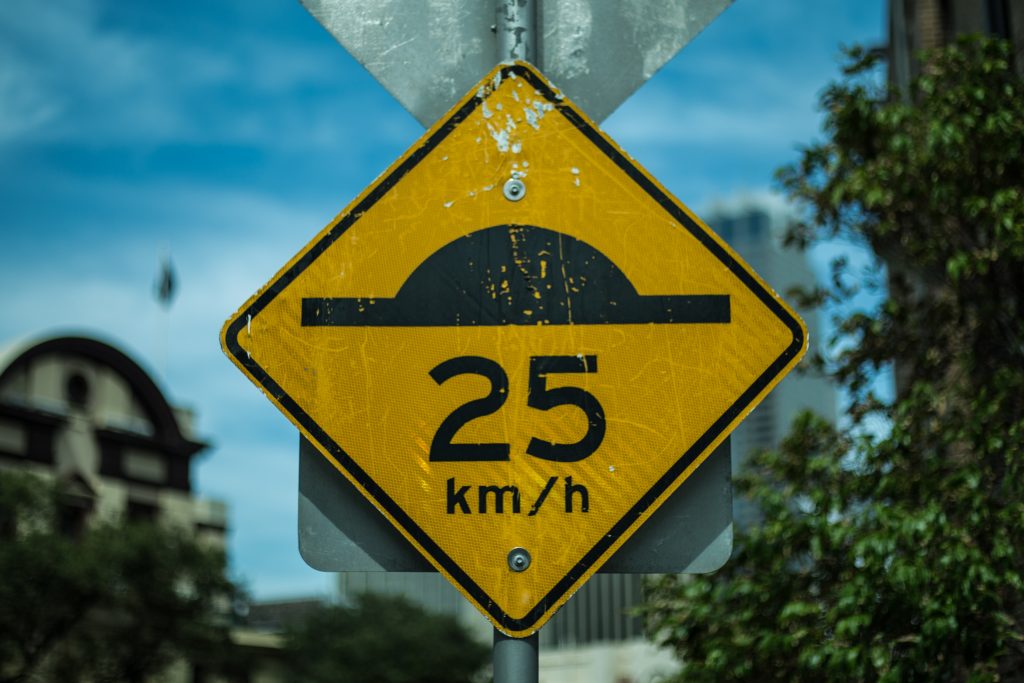
Photo by Makarios Tang on Unsplash
Australia uses the metric system. Therefore, the distances are measured in metres and kilometres. The speed limits given are in kilometres per hour. There are two default speed limits:
50 kilometres per hour within the built-up areas (60 kilometres per hour in the Northern Territory)
100 kilometres per hour outside the built-up areas (110 kilometres per hour in the Northern Territory and Western Australia).
For any other speed restrictions than these, follow the signage.
Roadkills In Australia
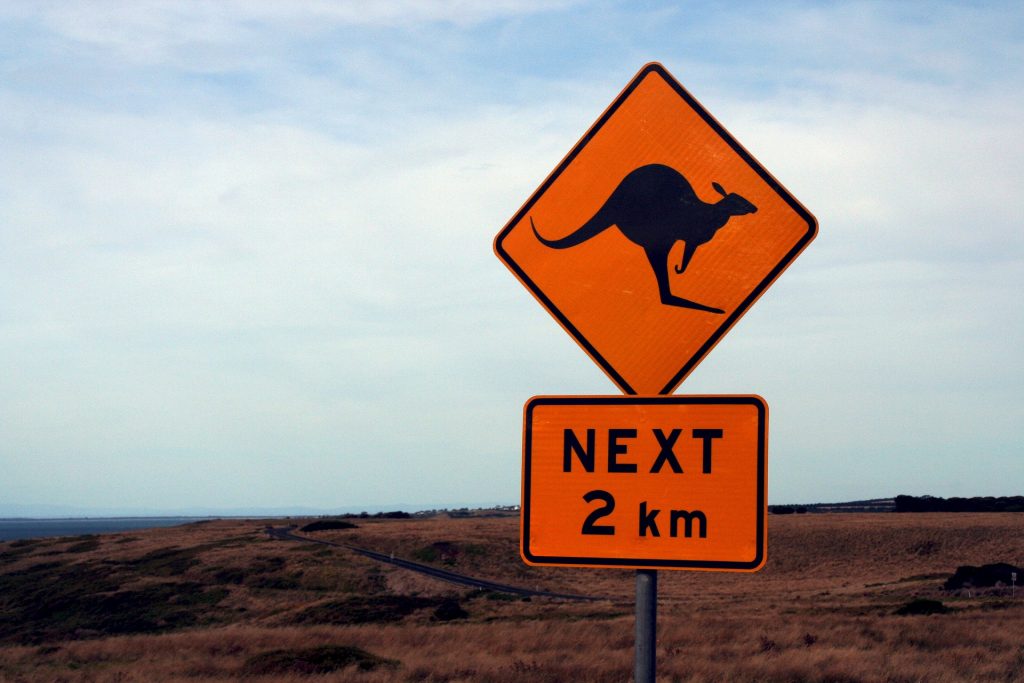
Photo from Pixabay
As you probably know, Australia is home to a number of unique wild animals such as koalas, kangaroos, camels or emus. As a result, the Aussie animal crossing signs are among travelers’ favorites. You should know though that coming across one of these animals when on the road is really an option, especially if you’re traversing wide swaths of land in the bushy rural areas. In order to avoid any animal-involving accidents, make sure to drive with extreme caution and scan both sides of the road because wildlife may appear suddenly and unexpectedly right in front of your vehicle.
As animals especially enjoy wandering around at nighttime, avoid driving after dark, above all in the more virgin areas of the country like the Northern Territory or Western Australia. If you do have to travel after sunset, turn on your high beams. At the same time, always be ready to hit the breaks in case the encounter with the animal actually takes place. However, if the accident couldn’t be avoided and you happened to hit an animal, don’t drive away. If only it’s safe and possible, stop and call the animal wildlife rescue group.
Hook Turns In Melbourne
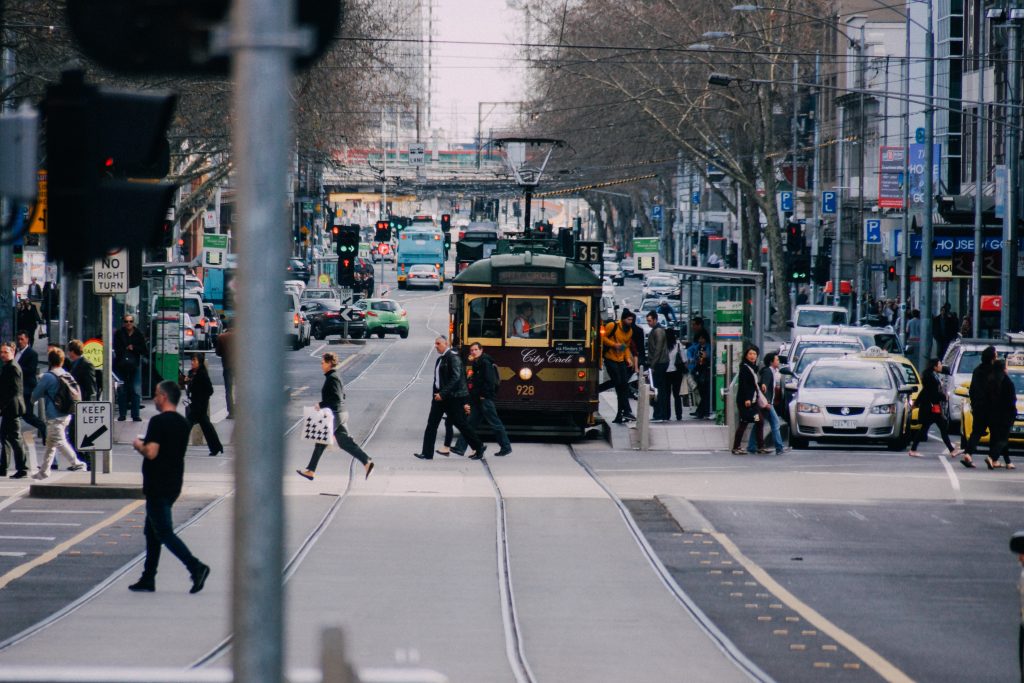
Photo by Weyne Yew on Unsplash
Although we have mentioned that car is a perfect means of transportation to travel the long distances across the rural areas, you’ll likely also be driving inside the city. Even the drivers who have gathered a lot of experience behind the wheel are challenged by the hook turns in Melbourne. So if you also plan to visit this fascinating city, we’ll tell you how to maneuver driving on its roads covered by an extensive network of trams.
Driving on the tram tracks in Melbourne is sometimes permitted and it is marked by a yellow dotted line. A solid yellow line next to the tracks, on the other hand, means that neither driving on the track nor making a turn from it is allowed. If you wish to turn right at an intersection with tram track, and it is permitted to do so, you will sometimes have to make a hook turn.
Basically, you will be turning from the farthest lane of the intersection (in this case the leftmost lane) once the light for the perpendicular street turns green. Intersections that require hook turns are marked with an adequate sign. If there’s no hook turn sign simply take your turn right from the farthest right lane.
Why Do We Recommend Driving In Australia?
You should be already convinced by now that self-driving is the best way to explore the Land Down Under and this is why:
You will be able to soak in the beautiful Aussie landscapes.
A car will get you to some remote places that would otherwise be unreachable.
The roads in Australia are well-maintained, there is relatively little traffic and the signages are clear and well-placed.
Australia has some incredibly scenic routes for a road trip!
Recommended Car Types For Different Parts of Australia
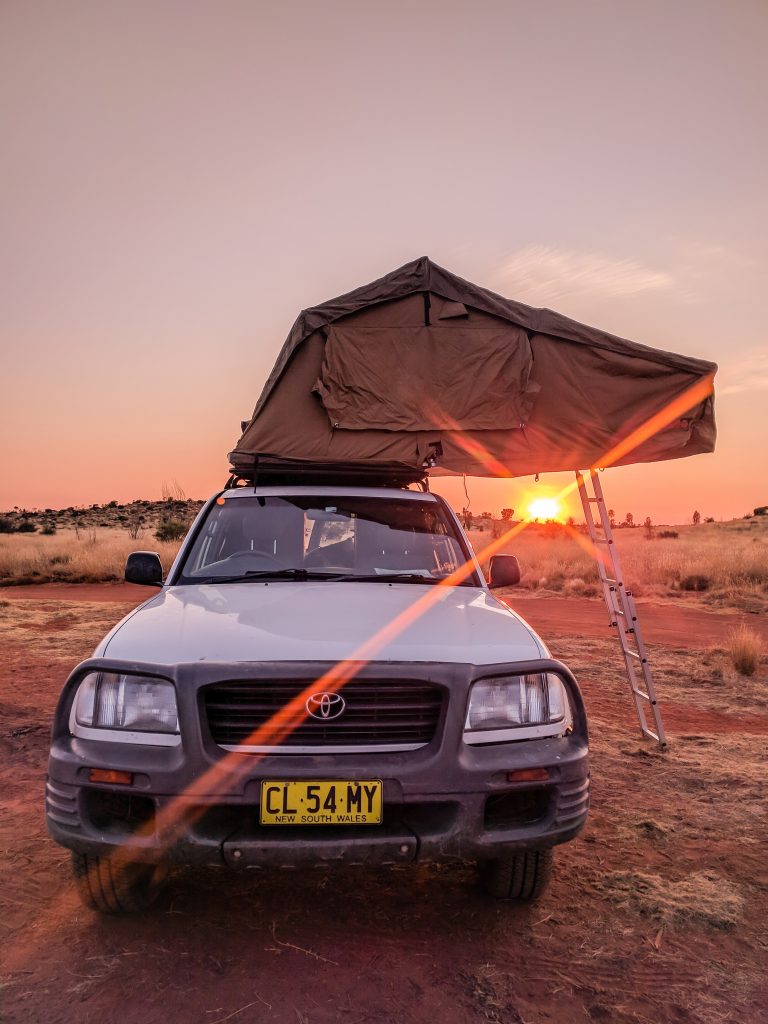
Photo by Mike Holford on Unsplash
You have your route planned and know all the traffic rules. But you can’t start your Australian road trip adventure before you choose the right type of car for the occasion. The options vary and the final decision often turns out to have a significant influence on the outcome of the whole trip. Therefore, we definitely advise you to give it a thought before you set off on your Aussie adventure.
Station Wagon
A station wagon is a great option for a small group of friends and a driver who prefers to drive automatic. Not only are they generally affordable and easy to repair, but they also have a large trunk which makes it possible to sleep in the car if you choose not to stay at a property every now and then.
Campervan
When it comes to that aspect, campervans are an even more tempting alternative – bigger and therefore quite well-equipped, with a little kitchen and decent sleeping space, they offer even more independence. Everything comes at a price and so in the case of a campervan you should take into consideration that it’s going to be more expensive than a station wagon but also a bit harder to maneuver because of the predominantly manual gearbox and its size.
4WD
If you plan to venture into the wild and explore the more remote regions of Australia, a 4WD would be the best option to get you there. It’s probably going to be the most expensive of the options and one that would involve no sleeping in the car but with such a car you can be sure to make it successfully, as well as safe and sound, to all your “out in the wild” destinations.
Last Words
A road trip through Australia will definitely be an unforgettable experience so get your driving license ready, plan your route, check Gumtree or Craigslist for car options (it’s often more cost-effective to buy one than rent it, especially if you’re going to travel for some weeks) and enjoy all the Land Down Under has to offer! And to stay on the safes side, consult the road rules in different Australian states here.

